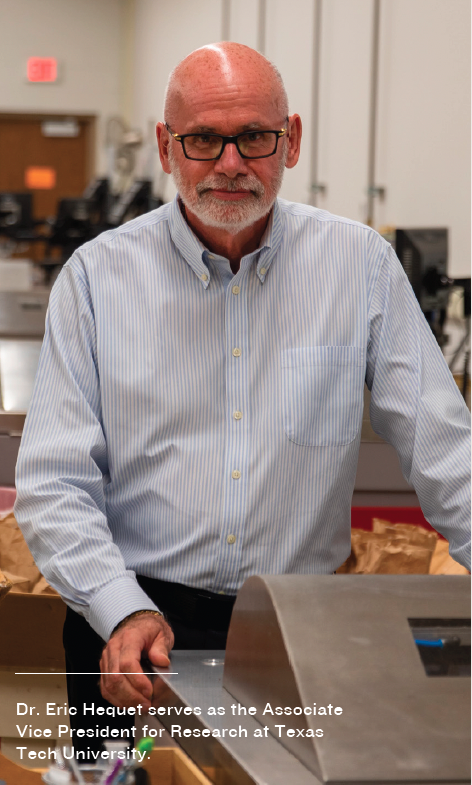by Blair White
When the right solution to a problem doesn’t exist, you innovate. 
Cotton growers have always needed scientists working on new ways to farm, process, and transform billions of pounds of annual production. That was the driving force to create Texas Tech University’s Fiber and Biopolymer Research Institute (then named otherwise) in 1923. Located in a quiet building in east Lubbock, FBRI’s scientific approach to innovation remains vital to growers’ profitability and fuels the quest for discovery in its labs.
“The initial objective was to work on cotton fiber in Texas and help farmers,” explained Dr. Noureddine Abidi, Texas Tech Professor and Director of FBRI. “Today, the objective is really to promote the cotton industry in Texas through either providing a service, developing a workforce, or developing research projects to respond to a need in the cotton industry. We do everything we can to be the research arm of the cotton industry and come up with ways to improve cotton fibers.”
FBRI is part of the College of Agricultural Sciences and Natural Resources. The faculty and staff at FBRI teach, research, and serve at the college and beyond. Dr. Eric Hequet, who serves as the Associate Vice President for Research at Texas Tech, concentrates on fiber quality and helps oversee FBRI.
“Our number one goal is basically to make a contribution to make U.S. cotton better,” Hequet said. “This is mostly to have better market access. We need to sell our cotton at the best price possible. We need to be the first preferred source of raw material for the international community. We do all of these things with students and post-doctoral researchers.”
In addition to working with students, FBRI also works with other cotton industry businesses and organizations such as breeders, Texas A&M University, Bayer, BASF, and others. This research adds value to the fiber crop by focusing on genetic improvements.
“You have some parameters that are highly genetic (heritable),” Hequet said. “Length and strength are moderately heritable while fiber diameter and elongation of the fibers are very heritable. Very little genetics have to do with fiber maturity, which basically depends on the environment. This all has a big impact on the final quality of the product. If you improve the germplasm and if you improve the varieties, even if you have a bad weather event that lowers the quality globally, these varieties are still better than what we had before. Then obviously we look at the effect of irrigation, crop termination, ginning practices, etc., on the final quality of the final product.”
While improvement begins in the field, the team at FBRI is also discovering new ways to add value downstream such as finding new markets for low micronaire cotton.
“We will always have some cotton that is not premium cotton,” Abidi explained. “Finding a niche market for that cotton will always benefit the farmer because you are producing a high-value product from something that can be discounted. We are using low-mic cotton to produce bioplastics because it is very easy to process. We can also use a different material that is left over from the spinning mill where they have cotton waste, or linter, or gin trash. All these products contain cellulose. That is what we are interested in – trying to use that as a source to produce this material. We are already the only research institute that can take the cotton as seed cotton and convert it to a textile product, and now a value-added bioproduct. We are the only one doing all of this under one roof.”
FBRI is the only research institute in the country that can carry out cotton research from the first to the final stages of testing in the same facility. Groundbreaking innovations are born here while keeping in step with the university’s standard on diversity and inclusion.
“We need to bring young people into the cotton community, we need to bring women into the cotton community, we need to bring minorities into the cotton community,” Hequet said. “If we don’t do that, at some point, it will just have a few retirees, and that’s it. So, it’s very important to bring the next generation into the cotton business.”
Abidi echoed Hequet’s comments.
“We need to give them the right message,” Abidi said. “Cotton is more than just tractors and harvesters. The TTU cotton network works on genetics/ genomics, drones, robotics, big data, etc. Even before you choose the seed, put it in the soil; there’s a lot of research behind that. We need to advertise it as cotton is innovation, and everyone is welcome to participate. That’s how we get the new generation to come participate and be the next leaders.”


